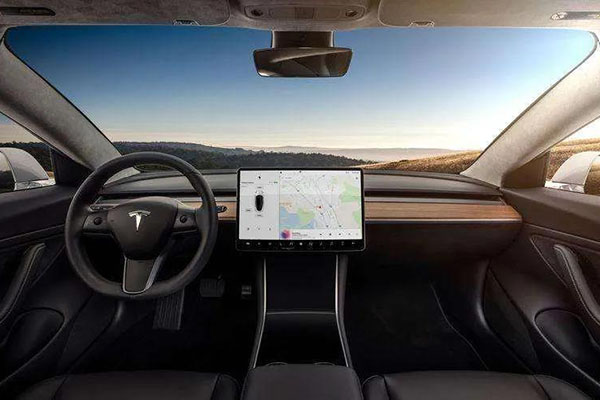“The market is in the hands of minority”
Currently, companies that drive passenger cars automatically can be roughly divided into three categories. The first category is a closed-loop system similar to Apple (NASDAQ: AAPL). The key components such as chips and algorithms are made by themselves. Tesla (NASDAQ: TSLA) does this. Some new energy car companies also hope to gradually embark on it. this road. The second category is an open system similar to Android. Some manufacturers make smart platforms, and some make cars. For example, Huawei and Baidu (NASDAQ: BIDU) have intentions in this regard. The third category is robotics (driverless taxis), such as companies such as Waymo.

This article will mainly analyze the feasibility of these three routes from the perspective of technology and business development, and discuss the future of some new power car manufacturers or autonomous driving companies. Don’t underestimate technology. For autonomous driving, technology is life, and the key technology path is the strategic path. So this article is also a discussion on the different paths of autonomous driving strategies.
The era of software and hardware integration has arrived. The “Apple model” represented by Tesla is the best path.
In the field of smart cars, especially in the field of autonomous driving, adopting Apple’s closed-loop model can make it easier for manufacturers to optimize performance and improve performance. Quickly respond to consumer needs.
Let me talk about performance first. Performance is essential for autonomous driving. Seymour Cray, the father of supercomputers, once said a very interesting word, “Anyone can build a fast CPU. The trick is to build a fast system”.
With the gradual failure of Moore’s Law, it is not feasible to simply increase the performance by increasing the number of transistors per unit area. And because of the limitation of area and energy consumption, the scale of the chip is also limited. Of course, the current Tesla FSD HW3.0 (FSD is called Full Self-Driving) is only a 14nm process, and there is space for improvement.
At present, most digital chips are designed based on the Von Neumann Architecture with the separation of memory and calculator, which creates the entire system of computers (including smart phones). From software to operating systems to chips, it is deeply affected. However, the Von Neumann Architecture is not completely suitable for the deep learning that autonomous driving relies on, and needs improvement or even breakthrough.
For example, there is a “memory wall” where the calculator runs faster than the memory, which can cause performance problems. The design of brain-like chips does have a breakthrough in architecture, but the leap too far may not be applied soon. Moreover, the image convolutional network can be converted into matrix operations, which may not be really suitable for brain-like chips.
Therefore, as Moore’s Law and the Von Neumann architecture both encounter bottlenecks, future performance enhancements mainly need to be achieved through Domain Specific Architecture (DSA, which can refer to dedicated processors). DSA was proposed by Turing Award winners John Hennessy and David Patterson. It is an innovation that is not too far forward, and is an idea that can be put into practice immediately.
We can understand the idea of DSA from a macro perspective. Generally, the current high-end chips have billions to tens of billions of transistors. How these huge numbers of transistors are distributed, connected, and combined have a great impact on the performance of a specific application. In the future, it is necessary to build a “fast system” from the overall perspective of software and hardware, and rely on optimization and adjustment of the structure.

“Android mode” is not a good solution in the field of smart cars.
Many people believe that in the era of autonomous driving, there are also Apple (closed loop) and Android (open) in the field of smart phones, and there will also be heavy-core software providers like Google. My answer is simple. The Android route will not work on autonomous driving because it does not meet the direction of future smart car technology development.
“Android mode” is not a good solution in the field of smart cars.
Many people believe that in the era of autonomous driving, there are also Apple (closed loop) and Android (open) in the field of smart phones, and there will also be heavy-core software providers like Google. My answer is simple. The Android route will not work on autonomous driving because it does not meet the The architecture of smart phones and smart cars is different. The focus of smartphones is ecology. Ecosystem means providing various applications based on ARM and IOS or Android operating systems. Therefore, Android smart phones can be understood as a combination of a bunch of common standard parts. The chip standard is ARM, on top of the chip is the Android operating system, and then there are various apps on the Internet. Because of its standardization, whether it is a chip, an Android system, or an App, it can easily become a business independently.direction of future smart car technology development.


The focus of smart cars is the algorithm and the data and hardware supporting the algorithm. The algorithm requires extremely high performance whether it is trained in the cloud or inferred on the terminal. The hardware of the smart car requires a lot of performance optimization for specific specialized applications and algorithms. Therefore, only algorithms or only chips or only operating systems will face performance optimization dilemmas in the long run. Only when each component is developed by itself can it be easily optimized. The separation of software and hardware will result in performance that cannot be optimized.
We can compare it this way, NVIDIA Xavier has 9 billion transistors, Tesla FSD HW 3.0 has 6 billion transistors, but Xavier’s computing power index is not as good as HW3.0. And it is said that the next-generation FSD HW has a performance improvement of 7 times compared with the current one. So, it’s because Tesla chip designer Peter Bannon and his team are stronger than NVIDIA’s designers, or because Tesla’s methodology of combining software and hardware is better. We think the methodology of combining software and hardware must also be an important reason for the improvement of chip performance. Separating algorithms and data is not a good idea. It is not conducive to rapid feedback on consumer needs and rapid iteration.
Therefore, in the field of autonomous driving, disassembling algorithms or chips and selling them separately is not a good business in the long run.